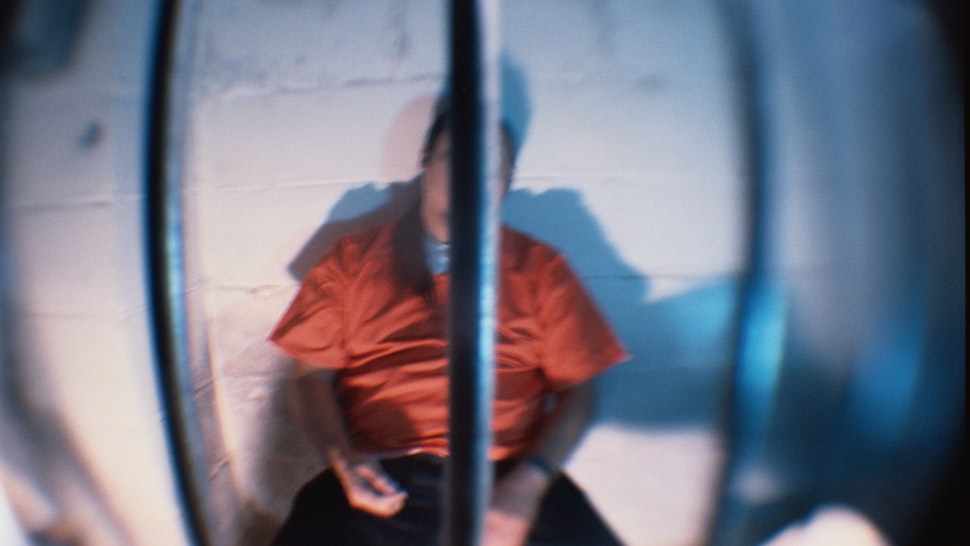(Ashe Schow) Robert DuBoise was just 18 years old when he was arrested for the rape and murder of a 19-year-old woman. He was convicted of the crime in March 1985 and spent a total of 37 years in prison before he was released after DNA evidence concluded he didn’t commit the crime.
Related Programmed Holographic Discs For Physical and Spiritual Health
by Ashe Schow, August 31st, 2020
On August 19, 1983, the body of a young woman was found behind a dentist’s office in Tampa, Florida. An autopsy alleged that she had a human bite mark on her face. Police were told to collect bite mark impressions from suspects.
DuBoise’s name came to police after a local resident claimed he “caused problems” where they regularly spent time. DuBoise had never been convicted of a violent crime and cooperated with police, even allowing them to take a mold of his teeth, according to a summary of the case from the Innocence Project.
Dr. Richard Souviron, an odontologist, determined the mold of DuBoise’s teeth matched the bite mark on the woman’s face, leading to DuBoise’s arrest. Bite mark analysis, however, is not a scientifically validated form of forensics. A study from the American Board of Forensic Odontology found that its members couldn’t even agree on whether images they were shown contained bite marks at all.
“That was so horrifying. If experts can’t agree on the answer to that initial question: Is this or is this not a bite mark? That should trouble anybody,” former ABFO president Dr. Adam Freeman said of the study, according to the Innocence Project.
Yet in 1983, bite-mark analysis was still considered enough evidence to arrest DuBoise. The only other evidence against DuBoise came from a jailhouse informant who claimed the suspect incriminated himself. This informant was facing life in prison for multiple charges, “including kidnapping, armed robbery and battery on a law enforcement officer,” the Innocence Project explained, yet he was given a plea deal and sentenced to just five years in prison.
“In August 2006, DuBoise filed a motion for post-conviction DNA testing. In 2007, pursuant to a court order the state responded that in 1990 the Hillsborough County Clerk’s Office disposed of the evidence “in the regular course of business.” Defense counsel met with a Tampa Police Department detective to determine whether any items not admitted at trial were in the police department’s custody, at which time approximately ten boxes of evidence were found–mostly trace evidence. After a 2008 hearing, a judge concluded that even if the evidence was suitable for testing, it would not exonerate DuBoise because the state’s theory was that two other individuals participated in the crime,” the Innocence Project reported.
In 2020, slides from the victim’s autopsy were discovered. DNA testing found DNA from two males present on the victim, neither of which belonged to DuBoise or the two other men who were implicated in the crime but never charged.
The DNA evidence led to DuBoise’s release from prison on August 27. He spent nearly 37 years in prison for a crime he didn’t commit and was convicted of based on extremely weak “evidence.” At least 33 known wrongful convictions and indictments came as a result of bite mark evidence, the Innocence Project explained. Seventeen percent of the 375 DNA-based exonerations involved false accusations from jailhouse informants.
About The Author
Ashe Schow is a reporter and columnist with bylines at the Federalist and the New York Observer. She has previously worked for Real Clear Investigations, the Washington Examiner, and the Heritage Foundation. She lives in Virginia with her fiance and two cats, Shadow and Charlie.
Stillness in the Storm Editor: Why did we post this?
The news is important to all people because it is where we come to know new things about the world, which leads to the development of more life goals that lead to life wisdom. The news also serves as a social connection tool, as we tend to relate to those who know about and believe the things we do. With the power of an open truth-seeking mind in hand, the individual can grow wise and the collective can prosper.
– Justin
Not sure how to make sense of this? Want to learn how to discern like a pro? Read this essential guide to discernment, analysis of claims, and understanding the truth in a world of deception: 4 Key Steps of Discernment – Advanced Truth-Seeking Tools.
Stillness in the Storm Editor’s note: Did you find a spelling error or grammatical mistake? Send an email to [email protected], with the error and suggested correction, along with the headline and url. Do you think this article needs an update? Or do you just have some feedback? Send us an email at [email protected]. Thank you for reading.
Source:

Leave a Reply